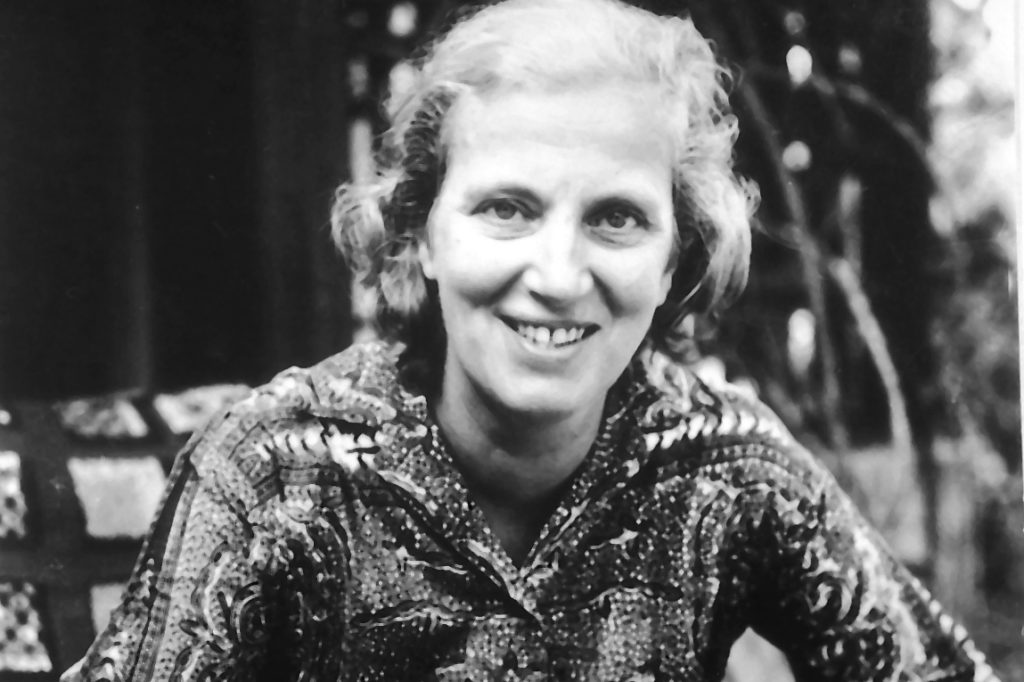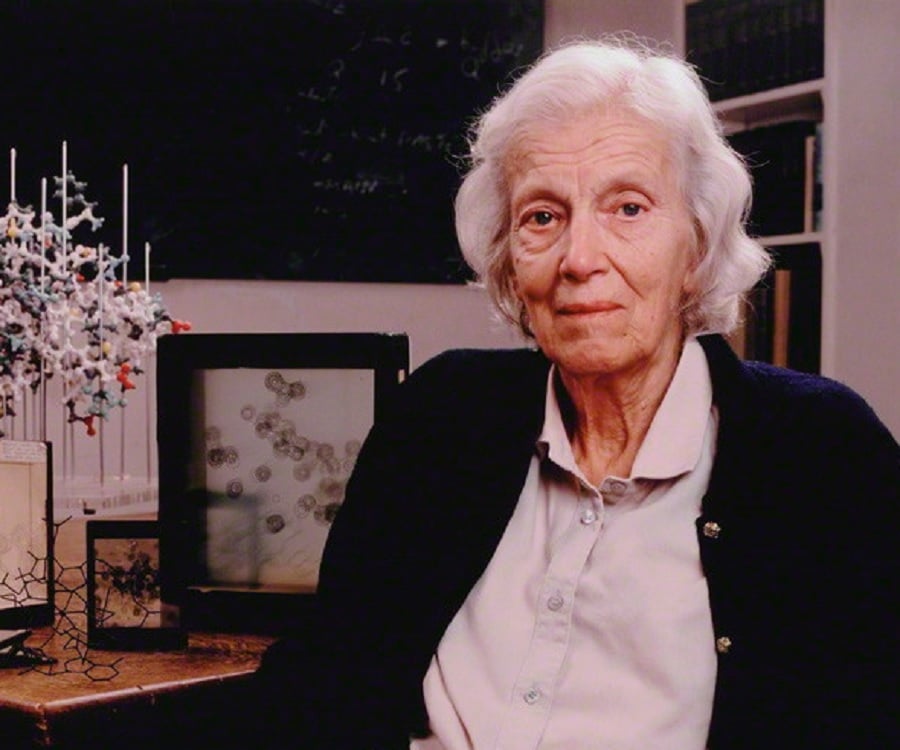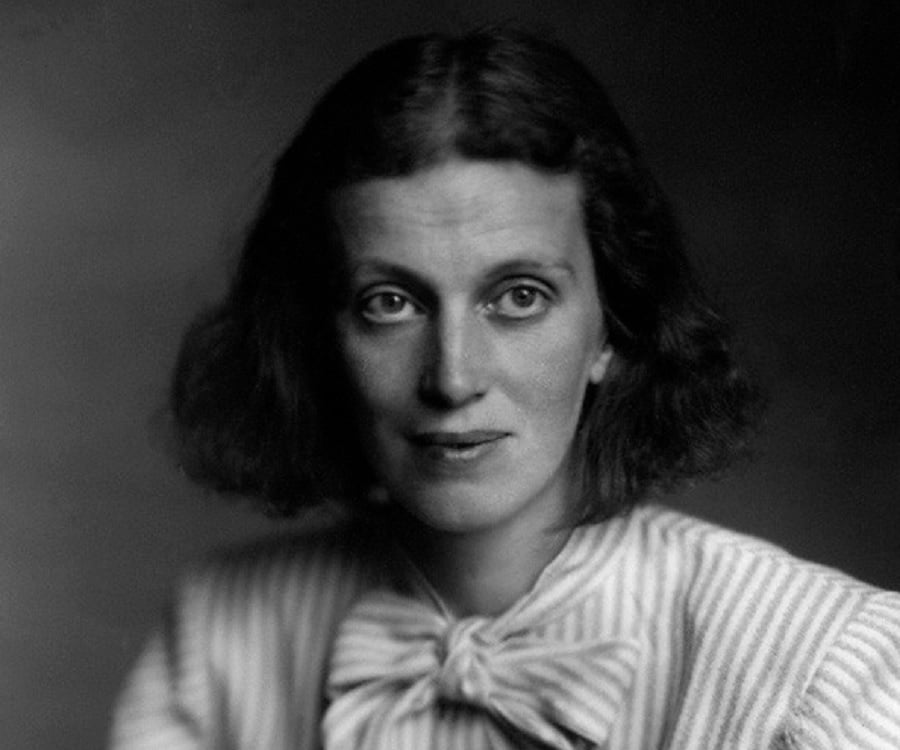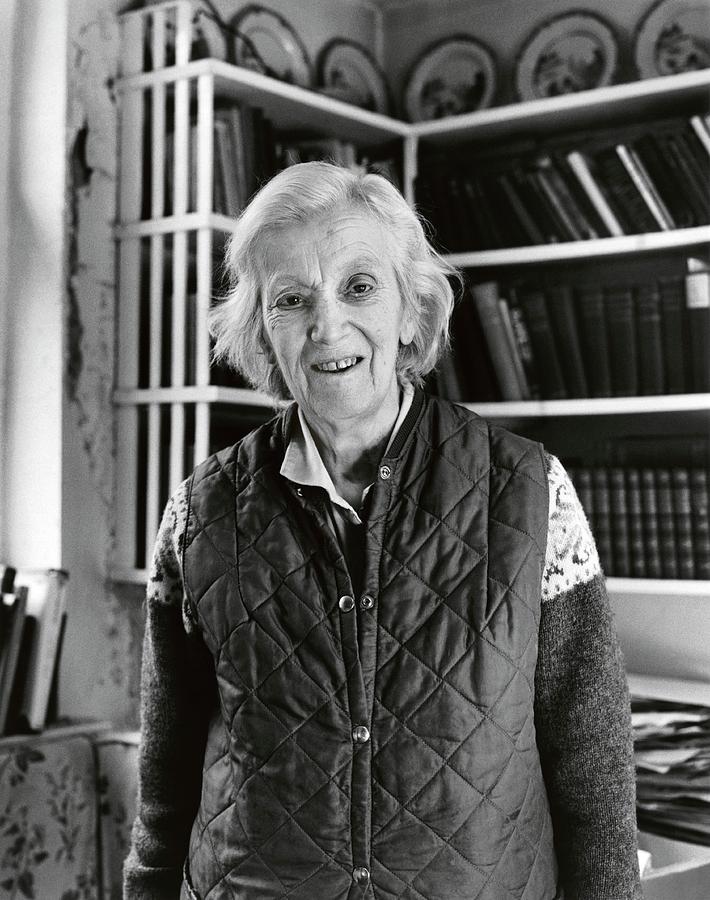
¿A quién le debemos gratitud por la penicilina? Historia F+Q
Dorothy Mary Crowfoot Hodgkin was a British chemist and crystallographer. She was known for using x-ray techniques to determine the structure of biologically important molecules, including penicillin, insulin, and vitamin B12.

Beautiful Science Remembering Dorothy Crowfoot Hodgkin (1910 1994
Dorothy Mary Crowfoot Hodgkin OM FRS HonFRSC (née Crowfoot; 12 May 1910 - 29 July 1994) was a Nobel Prize -winning British chemist who advanced the technique of X-ray crystallography to determine the structure of biomolecules, which became essential for structural biology.

Dorothy CrowfootHodgkin, la reina de la cristalografía de biomoléculas
The Nobel Prize | Women who changed science | Dorothy Crowfoot Hodgkin Match with a laureate "Captured for life by chemistry and by crystals," as she described it, Dorothy Hodgkin turned a childhood interest in crystals into the ground-breaking use of X-ray crystallography to "see" the molecules of penicillin, vitamin B12 and insulin.

Dorothy Hodgkin Biography Childhood, Life Achievements & Timeline
Abstract Dorothy Hodgkin was an X-ray crystallographer whose scientific career began in the 1930s and finished in the 1990s; her research had a deep influence on modern crystallography, chemistry and biochemistry. She had a profound grasp of crystallography and a genius for applying its methods.

Dorothy Hodgkin Quotes Quotes of famous people
Dorothy Mary Crowfoot was born in Cairo, Egypt, of English parents, in 1910. Her father, John Winter Crowfoot, worked for the Egyptian Educational Service; her mother, the former Grace Mary Hood (known as Molly), was an expert on ancient textiles. Dorothy was the first of four daughters.

Dorothy Hodgkin Biography & Facts Britannica
Dorothy Mary Crowfoot Hodgkin was born in Cairo, Egypt, on 12 May 1920. 1 Her parents were archaeologists - her father was an educational administrator and her mother a pioneer in the study of archaeological textiles and a botanist. 2

Dorothy Crowfoot Hodgkin (Inglaterra, 12 de mayo de 1910 Inglaterra 19
English chemist and crystallographer Dorothy Mary Crowfoot Hodgkin received the 1964 Nobel Prize in chemistry for "work on the structure of biochemical compounds essential to the understanding and control of pernicious anemia," specifically for her elucidation of the molecular structure of vitamin B12 (one of the most complex nonprotein compounds) in 1957.

Dorothy Hodgkin Women in Exploration
1910-1994. Dorothy Mary Crowfoot Hodgkin. The sole Nobel Laureate in Chemistry in 1964, she was the third woman and the first Englishwoman to receive it. It was given for her work in X-ray crystallography, determining the structures of steroids, penicillin, and vitamin B 12; she later determined the structure of insulin in collaboration with.

Dorothy Hodgkin 104th Birthday Google Doodle
Dorothy Hodgkin was already a role model at the time at the University of Oxford, where she had been Margaret Thatcher's tutor. Her influence was very strong on the conservative politician, so much so that when she ended up becoming Prime Minister of the UK, she hung a picture of Hodgkin in her office at 10 Downing Street.

KZ ASTRONÓMICA LA GALAXIA Dorothy Mary Crowfoot Hodgkin ¡Qué química
Dorothy Hodgkin See all media Category: Science & Tech In full: Dorothy Crowfoot Hodgkin Née: Dorothy Mary Crowfoot Born: May 12, 1910, Cairo, Egypt Died: July 29, 1994, Shipston-on-Stour, Warwickshire, England (aged 84) Awards And Honors: Copley Medal (1976) Nobel Prize (1964) Subjects Of Study: penicillin pepsin sterol vitamin B 12 Role In:

Dorothy Hodgkin Biography Childhood, Life Achievements & Timeline
Dorothy M. Hodgkin, orig. Dorothy Mary Crowfoot, (born May 12, 1910, Cairo, Egypt—died July 29, 1994, Shipston-on-Stour, Warwickshire, Eng.), English chemist. After studying at Oxford and Cambridge, she went to work at Oxford. From 1942 to 1949 she worked on a structural analysis of penicillin.

Dorothy Hodgkin Photograph by Lucinda Douglasmenzies Fine Art America
Dorothy Crowfoot Hodgkin's life as a researcher began when she received a chemistry book containing experiments with crystals as a child. After studying at Oxford University and despite graduating with good grades, as a woman, she had difficulty finding work. Finally, J.D. Bernal of Cambridge University, a pioneer of modern molecular biology.
Heroínas Dorothy Crowfoot Hodgkin Nobel de Química en 1964.
Dorothy Hodgkin and her contributions to biochemistry Judith A. K. Howard Nature Reviews Molecular Cell Biology 4 , 891-896 ( 2003) Cite this article 1840 Accesses 15 Citations 3 Altmetric.

Heroines of Science The story of Dorothy Crowfoot Hodgkin ReelLIFE
Dorothy Hodgkin, one of the main founders of protein crystallography, possessed a unique mixture of skills that allowed her to extend the use of X-rays to reveal the structures of compounds that were far more complex than anything attempted before. Victory in Europe Day in Oxford, 8 May 1945. The war in Europe was over, and thousands of people.

Dorothy Hodgkin, British chemist Stock Image C011/9900 Science
In the late 1930s Dorothy Crowfoot Hodgkin (1910-1994) became a leading practitioner of the use of X-ray crystallography in determining the three-dimensional structure of complex organic molecules. Dorothy Crowfoot Hodgkin was honored on this postage stamp issued in the United Kingdom.

Dorothy Hodgkin won the 1964 Nobel Prize in Chemistry "for her studies
Dorothy Crowfoot was born in Cairo on May 12th, 1910 where her father, John Winter Crowfoot, was working in the Egyptian Education Service. He moved soon afterwards to the Sudan, where he later became both Director of Education and of Antiquities; Dorothy visited the Sudan as a girl in 1923, and acquired a strong affection for the country.